Time. The most elusive yet valuable resource we have.
It's the one thing we can't buy more of, yet it's the one thing we often waste.
Nailing time management can transform your team's productivity, turning a good team into a great one.
So today we invite you to take a look at time management techniques that can help your team succeed.
Understanding the importance of time management
Time management is the linchpin that holds all productivity together. It's way more than just ticking tasks off a to-do list. It's about: prioritizing, strategizing, and maximizing your efficiency.
When a team manages their time effectively, they can accomplish more in less time, reduce stress, and improve their overall work-life balance.
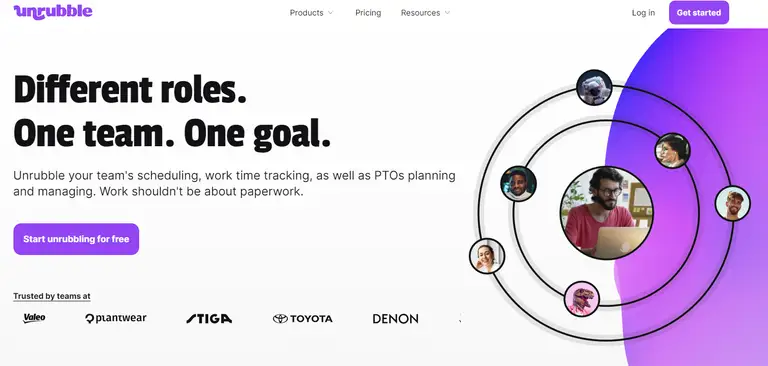
Try Unrubble for effective work time management, schedule making & more.
Best time management techniques
To help you reap off these benefits, we’ve crafted the ultimate, curated list of the top time management methods out there.
Everything so that your team can work even better than they’re doing it now.
Technique 1: The Eisenhower Box
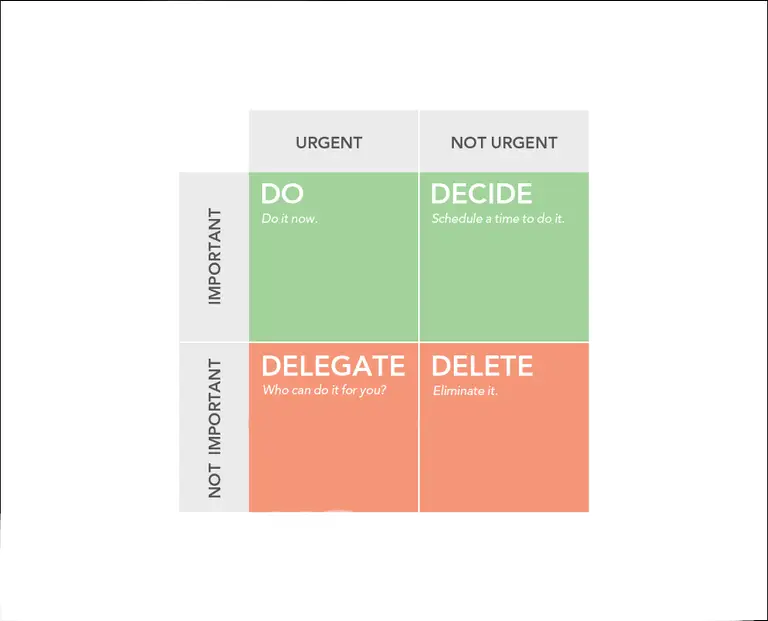
The Eisenhower Box, named after President Dwight D. Eisenhower, is a prioritization tool that helps you decide on and schedule tasks. It’s done by distinguishing between what's important and what's urgent. This is a straightforward and efficient method to prevent your to-do list from ruling your day.
How it works ⚙️
The Eisenhower Box works by dividing tasks into four categories:
- urgent and important,
- important but not urgent,
- urgent but not important, and
- neither urgent nor important.
When you categorize your duties this way, you can concentrate on what truly matters. Be ready to schedule less urgent tasks, delegate what can be handled by others, and eliminate duties that don't contribute to your goals.
Why it’s good 👍
The benefits of using the Eisenhower Box are numerous. It helps you focus on assignments that align with your long-term goals, reduces stress by preventing last-minute rushes, increases productivity by eliminating unnecessary tasks, and improves decision-driving skills by forcing you to regularly evaluate and prioritize tasks.
Practical example 📚
For instance, a team leader could use the Eisenhower Box during a project planning session. They may categorize a looming project deadline as urgent and important, requiring immediate attention. Regular team meetings might be important but not urgent, so they could be scheduled for later. A request from a different department might be urgent but not important, making it a candidate for delegation. Finally, a low-priority administrative task might be neither urgent nor important, so it could be eliminated or postponed.
Technique 2: The Pomodoro Technique
The Pomodoro Technique was developed by Francesco Cirillo in the late 1980s. It's named after the tomato-shaped kitchen timer that Cirillo used as a university student. The method uses a timer to break work into intervals, traditionally 25 minutes in length, separated by short breaks.
How it works ⚙️
The magic behind this technique lies in its five simple steps. Choose a task, set a timer for 25 minutes, work on the task until the timer rings, take a short break, and every four "pomodoros" take a longer break. This approach encourages intense dedication for short periods, promoting efficiency and preventing burnout.
Why it’s good 👍
Some of the many boons this brings include improved attention and concentration by creating a sense of urgency, preventing overwork thanks to providing regular breaks, elevated capacity by reducing the impact of interruptions, and an enhanced work-life balance by ensuring work doesn't consume your entire day.
Practical example 📚
To illustrate this, consider the case of a software developer using the Pomodoro Technique to maintain focus while coding. They could set a timer for 25 minutes and dedicate that time to writing code without any distractions. After the timer rings, they could take a five-minute break to stretch, grab a coffee, or simply rest their eyes before starting the next "pomodoro."
Technique 3: Time Blocking
Time blocking involves dividing your day into blocks of time. Each block is dedicated to accomplishing a specific task or group of tasks and only those tasks.
How it works ⚙️
In practice, time blocking calls out for planning your day in advance and designating specific time slots for different tasks or activities. These blocks of time are then recorded in your calendar or planner. As such, they create a visual representation of your day.
Why it’s good 👍
An advantageous aspect of this is that it can help reduce multitasking and context switching, intensify focus and success, provide a clear structure to your day, and make it easier to manage complex schedules and deadlines.
Practical example 📚
A concrete demonstration of this can be seen in how a content writer could use time blocking to manage their day. They could block out a few hours in the morning for deep, concentrated writing, a block of time around noon for meetings and collaboration, and another in the afternoon for editing and administrative tasks. This way, they ensure that they have dedicated time for each type of work and aren't constantly switching between tasks.
Technique 4: The 2-Minute Rule
The 2-Minute Rule is a time management technique from David Allen's best-selling book, "Getting Things Done." The idea is that if a task takes less than two minutes to complete, you should do it immediately rather than putting it off for later.
How it works ⚙️
Such an approach wields its power through a simple framework for tackling small tasks. If a task can be completed in two minutes or less, you do it right away. If it will take longer, you schedule it for later.
Why it’s good 👍
This offers a myriad of perks. It can save small tasks from piling up and becoming overwhelming, reduce the cognitive load of keeping track of numerous small tasks, and provide a sense of accomplishment that can boost motivation and productivity.
Practical example 📚
One instance that exemplifies this is an office manager using the 2-Minute Rule to handle emails. Instead of letting emails accumulate in their inbox, they could apply the 2-Minute Rule and immediately respond to any email that can be answered in two minutes or less. This way, they keep their inbox manageable and prevent small tasks from becoming big distractions.
Technique 5: The 80/20 Rule (Pareto Principle)
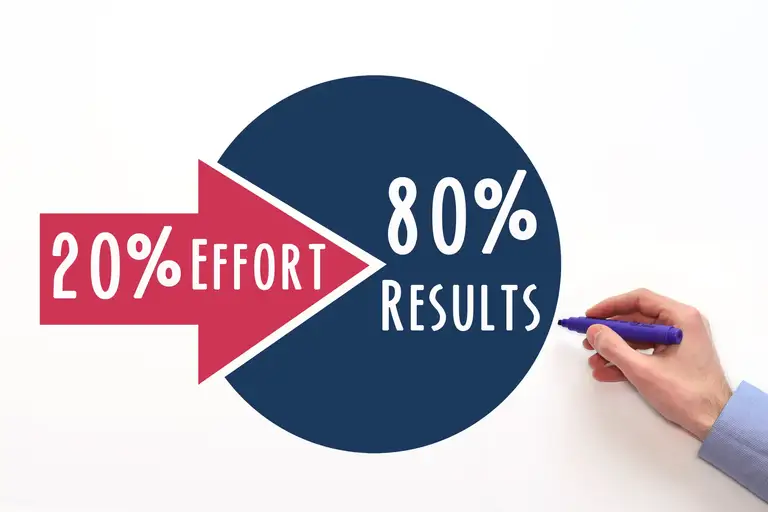
The 80/20 Rule, also known as the Pareto Principle, suggests that 80% of results come from 20% of efforts. It's named after Italian economist Vilfredo Pareto, who noticed that 80% of Italy's land was owned by 20% of the population.
How it works ⚙️
Unlocking its secrets, the 80/20 rule identifies the tasks that yield the highest results. By focusing on these high-impact tasks, you can achieve more with less effort.
Why it’s good 👍
Among its numerous advantages is empowering you to pay attention to the most critical work that yields the highest impact, ensuring that small tasks don't accumulate and overwhelm you. By applying the 80/20 Rule, you can efficiently manage your time and resources, allocating them to the most significant activities. Moreover, it relieves the cognitive burden of juggling numerous small tasks.
Practical example 📚
Let's take a specific scenario, like a sales team that could apply the 80/20 Rule to their client list. They might find that a small subset of their clients are responsible for the majority of their revenue. When they focus their efforts on these high-value clients, they may increase sales without significantly increasing their workload.
Technique 6: The ABCDE Method
The ABCDE Method categorizes responsibilities based on their importance and urgency. It's a basic but impactful way to set priorities and ensure that the most critical activities are completed first.
How it works ⚙️
The inner workings of this technique unfold with labeling tasks as A (must do), B (should do), C (could do), D (delegate), or E (eliminate). Thanks to this you can dedicate yourself to the to-dos that are most crucial and delegate or eliminate ones that are less essential or unnecessary.
Why it’s good 👍
The positive outcomes of this are numerous. This systematic approach also eases the cognitive burden of managing multiple missions by providing a clear and organized system for task tracking. As you methodically work through tasks in order of importance, you experience a sense of accomplishment with each completion, leading to heightened motivation and unturned performance.
Practical example 📚
Imagine, for a moment, a product manager using the ABCDE Method to manage a large project. They categorize the most critical tasks as A tasks, less critical but still crucial tasks as B tasks, and so on. Empowered with this approach, they can ensure that the project stays on track and that resources are allocated effectively.
Technique 7: The Rapid Planning Method (RPM)
The Rapid Planning Method (RPM) focuses on achieving outcomes rather than completing tasks. It's a powerful method that can help you stay oriented towards your goals and avoid getting bogged down in unimportant and not deep work tasks.
How it works ⚙️
The RPM works in three steps: knowing the result you're after (R), knowing why you want to achieve it (P), and knowing what you need to do to get there (M). Utilizing the RPM method makes it possible to engage with outcomes rather than tasks. As such, you ensure that all your actions are aligned with your goals.
Why it’s good 👍
This brings with it a host of benefits. It helps improve focus and productivity, increase motivation by connecting tasks to larger goals, as well as improve planning and decision-making skills.
Practical example 📚
In a practical context, think about a marketing team using the RPM to plan a new campaign. They start by identifying the result they want to achieve (e.g., boost website traffic), the reasons why they want to achieve it (e.g., to generate more leads), how to measure it (e.g., use a website traffic checker), and the actions they need to take to achieve it (e.g., create engaging content, optimize for SEO while avoiding potential cannibalization issues of having mulltiple pages target the same keywords, or use an SEO article writer, promote on social media and create reports).
Technique 8: The Time Audit
A time audit involves tracking how you spend your time over a certain period. It's a great tool that provides useful insights into your work habits and lets you identify areas for improvement.
How it works ⚙️
This technique is orchestrated through keeping a record of how you spend your time over a week or two. With this knowledge in your arsenal, you can now identify patterns, see where your time is going, and spot any time wasters.
Why it’s good 👍
One of the upsides to this is boosting effectiveness by identifying inefficiencies. Having a better sense of how you spend your time will also reduce stress (because you will eliminate time wasters) and improve work-life balance.
Practical example 📚
As a tangible example, picture a team conducting a time audit to find inefficiencies in their workflow. They track how they spend their time over a week and then analyze the results to identify any deeds that are taking longer than they should or any time wasters that could be eliminated.
Technique 9: The Seinfeld Strategy
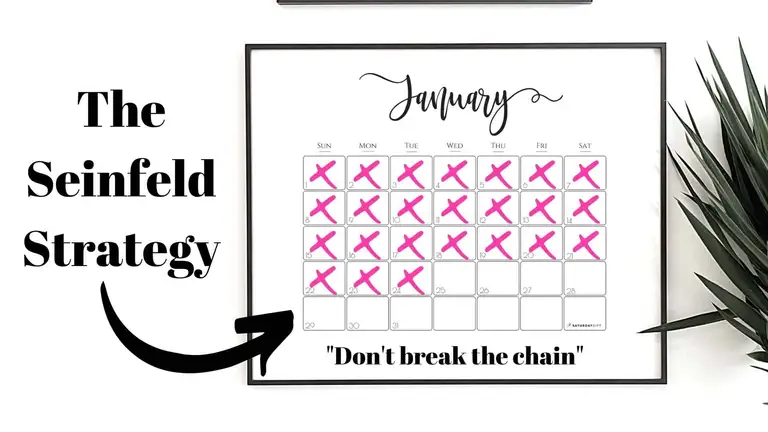
The Seinfeld Strategy, named after comedian Jerry Seinfeld, is based on doing something every day to build a streak and not "breaking the chain." It's a simple yet effective way to build consistency and make steady progress towards your goals.
How it works ⚙️
Much like a symphony, this technique harmonizes through choosing a task or habit you want to develop and then doing it every day. When you mark off each day on a calendar, you create a visual representation of your streak and motivate yourself to keep going.
Why it’s good 👍
Among the pluses of this are: improving consistency and discipline, increasing motivation by providing a visual representation of progress, and making large goals more manageable as you break them down into daily actions.
Practical example 📚
Suppose we encounter a situation where a writer uses the Seinfeld Strategy to develop a daily writing habit. They commit to writing every day, no matter how much or how little they write. This way, they can see their progress and motivate themselves to keep the streak going.
Technique 10: The Kanban Method
The Kanban Method is a visual project management system helping teams visualize their work, limit work-in-progress, and maximize efficiency. It lets teams manage their workflow and keep track of tasks.
How it works ⚙️
The Kanban Method works by visualizing your workflow on a Kanban board. Tasks are moved from a "to-do" column to an "in progress" column and finally to a "done" column. By doing so, you can see the status of tasks at a glance and identify any bottlenecks in your workflow.
Why it’s good 👍
The benefits of the Kanban Method are numerous. It can help improve productivity by reducing the amount of work-in-progress, increase efficiency by identifying bottlenecks, and improve collaboration by providing a visual representation of the team's workflow.
Practical example 📚
For example, a software development team could use a Kanban board to manage their workflow. They could visualize their tasks on the board and move them from "to-do" to "in progress" to "done" as they work on them. This can help the team stay organized and keep track of task management.
Technique 11: The Time Chunking Method
Time chunking breaks your workday into "chunks" of time dedicated to different types of tasks or activities. It's a way to organize your day that can help you prevent the mental fatigue that comes from constantly switching between tasks.
How it works ⚙️
Time chunking groups similar labors together and schedules specific time slots to work on them. By doing so, you can minimize distractions and maintain a high level of focus.
Why it’s good 👍
This holds the promise of several benefits, notably: improved work control and productivity as well as reduced feeling of overwhelm. It also gives a clear structure to your day along with time management skills boosters.
Practical example 📚
For instance, a manager could use time chunking to manage their day. They could book a few hours in the morning for phone calls and networking, another couple for developing soft skills, and a time chunk in the afternoon for some particular single task.
Technique 12: The Ivy Lee Method
With the The Ivy Lee Method, you end each day by writing down the six most vital tasks to accomplish the next day. Then you prioritize those jobs in order of importance.
How it works ⚙️
This method’s efficacy is rooted in its ability to make tough decisions about what's most key. Limiting yourself to six tasks and prioritizing them ensures that you focus on what's most important.
Why it’s good 👍
There’s a bunch of silver linings here. Ivy Lee can help boost performance by ensuring that the most pivotal occupations are completed first, lower anxiety by providing a clear plan for the day, and improve decision-making skills by forcing you to regularly evaluate all the tasks.
Practical example 📚
For a real-life demonstration, look no further than a team leader using the Ivy Lee Method to manage their tasks. At the end of each day, they could write down the six most important tasks for the next day and prioritize them. This way, they start each day with a clear plan and focus on what's most central.
Technique 13: The Four Ds of Time Management
The Four Ds of Time Management is another way to handle tasks. The four Ds stand for Do, Defer, Delegate, and Delete. Essentially, it’s a clear framework for deciding how to handle each task that comes your way.
How it works ⚙️
The Four Ds is the solution for making decisions about tasks. If a task is important and time-sensitive, you do it. If it's important but not time-sensitive, you defer it. If it's not important but time-sensitive, you delegate it. And if it's neither important nor time-sensitive, you delete it.
Why it’s good 👍
The benefits of the Four Ds are numerous. It provides a structured approach to handling tasks, allowing you to efficiently decide whether to Do, Delegate, Defer, or Delete them. By promptly addressing tasks that require immediate action (Do), you prevent them from piling up and becoming too much to handle.
Practical example 📚
For example, an ecommerce manager could use the Four Ds to manage their tasks. They could do the tasks that are most important and time-sensitive, defer less urgent ones, delegate those that can be handled by others, and delete tasks that are not necessary.
Technique 14: The SMART Goals
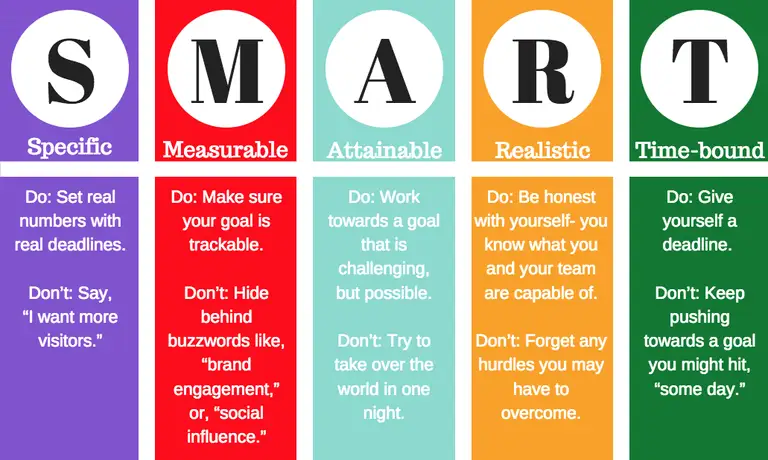
SMART Goals is a business goal-setting process. It means your goals should be Specific, Measurable, Achievable, Relevant, and Time-bound.
How it works ⚙️
SMART Goals gives a clear framework for setting goals. It is more likely that you will succeed if your goals are specific, measurable, achievable, relevant, and time-bound.
Why it’s good 👍
This paves the way for various advantages. Creating clear and actionable goals can lead to increased productivity, motivation, and improved planning and decision-making skills.
Practical example 📚
A sales team could use SMART Goals to set their sales targets. They could set a goal to increase sales by 10% over the next quarter, which is specific (increase sales), measurable (by 10%), achievable (with hard work and a good strategy), relevant (to the team's overall objectives), and time-bound (over the next quarter).
Technique 15: The Biological Prime Time
Biological Prime Time management strategy refers to the time of day when an individual's energy, focus, and capacity levels are at their peak. It's a way to schedule your most important tasks during your most productive hours.
How it works ⚙️
Biological Prime Time works by identifying your most productive hours through observation or tracking and scheduling your specific responsibilities during these hours. As a result, you can maximize your productivity and ensure that your complete tasks get your best effort.
Why it’s good 👍
The benefits of Biological Prime Time are numerous. It might boost productivity by aligning duties with energy levels, reduce nervousness by preventing weariness, and improve work-life balance by ensuring that work is done during the most productive hours.
Practical example 📚
A team member who's a morning person could use Biological Prime Time to schedule their most challenging tasks for the morning hours. As such, they ensure that these to-dos get their best effort and are more likely to be completed successfully.
Technique 16: The One Thing Focus
The One Thing Focus’s purpose is to notice the one task that will make everything else easier or unnecessary and put your attention on it. It's a way to ensure that your most impactful tasks get the attention they deserve.
How it works ⚙️
The One Thing Focus works by forcing you to identify and focus on your most impactful task. By doing so, you can ensure that your efforts are directed where they will have the most impact.
Why it’s good 👍
Such a method brings a plethora of advantages. By honing in on a single, top-priority task at a time, it prevents small tasks from accumulating and becoming burdensome. This focused approach reduces the cognitive load of multitasking and helps you maintain clarity in your objectives.
Practical example �📚
A team might identify a key project that, once completed, will significantly reduce their workload. Once they complete this one task, they can ensure that their efforts are directed where they will have the most impact.
Technique 17: The 1-3-5 Rule

The 1-3-5 Rule limits your to-do list to a manageable number of tasks each day. The rule suggests that you should aim to accomplish one big thing, three medium things, and five small things each day.
How it works ⚙️
The 1-3-5 Rule forces you to organize your tasks and focus on what's most significant. You can ensure that you don't spread yourself too thin thanks to limiting the amount of labor you aim to accomplish each day.
Why it’s good 👍
One can reap the rewards of this in multiple ways. It can help improve time management efforts, let you do more work every day and even boost the work-life balance.
Practical example 📚
To put it into perspective, a team leader could use the 1-3-5 Rule to manage their tasks. They focus on one big task, such as preparing a presentation for a client, three medium tasks, such as responding to important emails, and five small tasks, such as hosting meetings or updating project status reports.
Technique 18: The 10-Minute Rule
The 10-Minute Rule makes you dedicate at least 10 minutes to a task. The idea is that once you start a task, even for just 10 minutes, you're more likely to continue working on it.
How it works ⚙️
The 10-Minute Rule works by overcoming the initial resistance to starting a task. As soon as you commit to just 10 minutes, you can get started without feeling overwhelmed. Often, you'll find that you want to continue working once you've started.
Why it’s good 👍
The benefits of the 10-Minute Rule are significant. It can aid in lowering anxiety feelings, boosting efficiency by overcoming procrastination and improving your focus by encouraging you to get started on tasks.
Practical example 📚
A serial entrepreneur who's been putting off a difficult task could use the 10-Minute Rule to get started. They could commit to working on the task for just 10 minutes, often finding that they want to continue once they've started.
Technique 19: The 30/30 Method
The 30/30 Method operates by alternating 30 minutes of work with 30 minutes of personal time. It's a way to maintain a healthy work-life balance while still staying productive.
How it works ⚙️
The 30/30 Method gives you a balance between work and personal time. Thanks to it, you can stay productive without feeling overwhelmed or burned out.
Why it’s good 👍
Among the many virtues of this, one is that you can enjoy a perfectly balanced life - not too much work and not too much work-unrelated matters.
Practical example 📚
A CEO could use the 30/30 Method to manage their workday. They could work on a task for 30 minutes, then take a 30-minute break to relax, pursue a personal interest, or simply rest.
Technique 20: The 90/20 Rule
The 90/20 Rule involves working for 90 minutes and then taking a 20-minute break. It's based on research suggesting that the human brain can maintain concentration for about 90 minutes at a time.
How it works ⚙️
The 90/20 Rule works by aligning work periods with the brain's natural rhythm. When you work for 90 minutes and then take a 20-minute break, you can maintain a high level of focus and stop tiredness.
Why it’s good 👍
The benefits of the 90/20 Rule are pretty attractive. It may potentially improve output by aligning work periods with the brain's natural rhythm, reduce stress by providing regular breaks, and improve attention.
Practical example 📚
For example, a B2B SaaS SEO agency worker (at, for example, Spacebar Collective) could use the 90/20 Rule to manage their workday. They could work for 90 minutes, then take a 20-minute break to rest, recharge, or do something enjoyable.
Technique 21: The Action Priority Matrix
The Action Priority Matrix is a time management tool that helps you decide on and prioritize tasks by their impact and effort. It's a way to focus on tasks that provide the greatest return on investment.
How it works ⚙️
The only step involved in this technique entail categorizing tasks into four quadrants based on their impact and effort: Quick Wins (high impact, low effort), Major Projects (high impact, high effort), Fill Ins (low impact, low effort), and Thankless Tasks (low impact, high effort).
Why it’s good 👍
One of the prime merits of this is that you can reach new yield levels and hone in on what brings you the best ROI. Your decision-making skills could be boosted as well.
Practical example 📚
For example, a freelancer uses the Action Priority Matrix for prioritizing tasks. They could categorize a high-impact, low-effort task as a Quick Win and prioritize it accordingly, while a low-impact, high-effort task might be categorized as a Thankless Task and delegated or eliminated.
Technique 22: The COPE Method (Create Once, Publish Everywhere)

The COPE Method makes you create content once and repurposing or reusing it in various ways. It's a way to save time and raise efficiency, especially in content creation and marketing.
How it works ⚙️
The COPE Method is all about maximizing the use of each piece of content you create. Instead of creating new content for each platform or medium, you create content once and then adapt it for use in different contexts.
Why it’s good 👍
With this method, get ready to improve efficiency, save time on content production, increase reach and become more consistent thanks to sharing the same message across all platforms.
Practical example 📚
As a case in point, imagine a marketing team taking advantage of the COPE Method to manage their blogging. They could create a blog post and then repurpose it into a series of social media posts, an infographic, a podcast episode, and even a newsletter update.
Technique 23: The Do It Now Principle
The Do It Now Principle involves tackling duties immediately rather than putting them off. It's a way to overcome procrastination and ensure that work doesn’t pile up.
How it works ⚙️
The Do It Now Principle creates a sense of urgency. Instead of putting tasks off for later, you tackle them immediately. As such, you prevent them from becoming more daunting over time.
Why it’s good 👍
Through this, you stand to benefit from avoiding procrastination, reducing tension from piling up tasks, and better self-control.
Practical example 📚
Suppose you encounter an entrepreneur who uses the Do It Now Principle to manage their tasks. Instead of putting off a difficult task, they tackle it immediately, preventing it from becoming more daunting over time and freeing up their mental energy for other tasks.
Technique 24: The Eat That Frog Technique
The Eat That Frog Technique’s rule is to do your most challenging task first thing in the morning. It's based on a Mark Twain quote: "Eat a live frog first thing in the morning, and nothing worse will happen to you the rest of the day."
How it works ⚙️
The Eat That Frog Technique’s secret lies in overcoming procrastination and resistance. When you tackle your most challenging task first, you can gain a sense of accomplishment that carries you through the rest of the day.
Why it’s good 👍
The perks afforded by this encompass boosted productivity, less worries throughout the day and better focus.
Practical example 📚
For instance, a chief marketing officer could use the Eat That Frog Technique to manage their tasks. They could tackle their most challenging task first thing in the morning, ensuring that it gets done and setting a productive tone for the rest of the day.
Technique 25: The Flowtime Technique
The Flowtime Technique makes you work on a task without distractions for as long as you can maintain focus, then taking a break. It's a way to achieve a state of "flow," where you're fully immersed in a task and lose track of time.
How it works ⚙️
The Flowtime Technique removes distractions and allows you to devote fully to a task. Instead of setting a specific time limit for a task, you work on it for as long as you can maintain focus, then take a break.
Why it’s good 👍
The benefits of the Flowtime Technique are numerous. It can help improve concentration and productivity, reduce stress by preventing burnout, and improve satisfaction by allowing you to fully immerse yourself in a task.
Practical example 📚
A software developer could use the Flowtime Technique to write code. They could remove all distractions and focus fully on writing code for as long as they can maintain concentration, then take a break to rest and recharge.
Technique 26: The Getting Things Done (GTD) Method
The Getting Things Done (GTD) Method captures all tasks and ideas in an external system, clarifying and organizing them, and reviewing them regularly. It's a comprehensive system that can help you stay organized and in control of your tasks.
How it works ⚙️
The GTD Method works by providing a clear system for managing tasks. Instead of trying to remember everything in your head, you capture everything in an external system, clarify what each item means and what needs to be done about it, organize the items into categories, review your system regularly, and engage with your tasks.
Why it’s good 👍
The GTD Method helps you stay informed about all your tasks, organize them efficiently, as well as track their progress.
Practical example 📚
For example, a shift manager uses the GTD Method to organize their tasks. They could capture all tasks and ideas in a shared shift management tool, clarify and organize the tasks, review the system regularly, and engage with the tasks as needed.
Technique 27: The MoSCoW Method
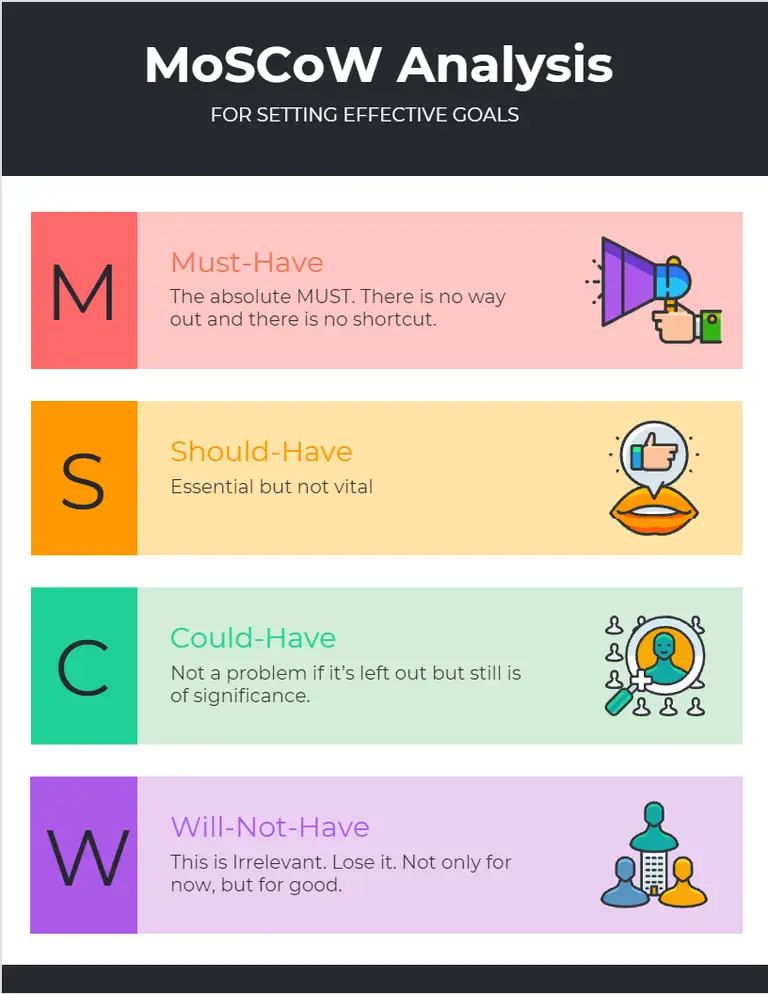
The MoSCoW Method stands for Must have, Should have, Could have, and Won't have. It's a practice to prioritize responsibilities based on their importance and urgency, ensuring that the most critical tasks are completed first.
How it works ⚙️
The MoSCoW Method works by categorizing work into four categories: Must have (tasks that are critical to complete), Should have (important but not critical tasks), Could have (nice-to-have tasks), and Won't have (tasks that are not a current priority). This allows you to focus on the tasks that are most important.
Why it’s good 👍
By using MoSCoW, you open yourself up to better task management, improved focus and decision-making skills.
Practical example 📚
Consider the following instance of a project manager who uses the MoSCoW Method to prioritize tasks for a project. They identify the tasks that are critical to the project's success (Must have), the tasks that are important but not critical (Should have), the tasks that would be nice to have if time allows (Could have), and the tasks that are not a current priority (Won't have).
Technique 28: The Not-To-Do List
The Not-To-Do List makes you identify operations that are not a good use of your time and consciously decide not to do them. It's a way to eliminate time-wasting activities and focus on actions that are truly important.
How it works ⚙️
The Not-To-Do List works by helping you identify and eliminate tasks that are not a good use of your time. Instead of trying to do everything, you prioritize what's truly important and let go of the rest.
Why it’s good 👍
It helps improve work quality, achieve greater job satisfaction, as well as enhance creativity.
Practical example 📚
For example, a CEO could use the Not-To-Do List to manage their tasks. They could identify tasks that are not a good use of their time, such as unnecessary meetings or low-value administrative tasks, and consciously decide not to do them. They may delegate such duties to somebody else.
Technique 29: The Pickle Jar Theory
The Pickle Jar Theory is all about sorting out work based on its importance and size, similar to filling a jar with rocks, pebbles, sand, and water. It aids in ensuring that the most important and largest chunks of work (the rocks) are completed first.
How it works ⚙️
The Pickle Jar Theory visualizes your work as rocks, pebbles, sand, and water. Then you group your to-dos. You start by completing the largest and most vital tasks (the rocks), then move on to smaller tasks (the pebbles), then even smaller tasks (the sand), and finally fill in any remaining time with the smallest tasks (the water).
Why it’s good 👍
Among the many virtues of this, some include better task prioritization, saved time and higher work quality.
Practical example 📚
A sales director could use the Pickle Jar Theory to manage their tasks. They could identify the most vital and largest tasks (the rocks) and complete them first, then move on to smaller tasks (the pebbles and sand), and finally fill in any remaining time with the smallest tasks (the water).
Technique 30: The ROSE Method (Record, Organize, Synthesize, Execute)
The ROSE Method records tasks, organizes them, synthesizes the information, and executes the tasks. It's a comprehensive system that can help you stay organized and in control of your tasks.
How it works ⚙️
The ROSE Method gives you a clear system for managing tasks. You start by recording all tasks, then organize them in a way that makes sense to you. Next, you synthesize the information to understand what needs to be done, and finally, you execute the tasks.
Why it’s good 👍
One can reap the rewards of this through less burnout, greater goal achievement, better time management and increased focus.
Practical example 📚
Imagine a restaurant owner taking advantage of the ROSE Method to manage their tasks. They could record all tasks in a shared project management tool, organize the tasks in a way that makes sense for the team, synthesize the information to understand what needs to be done, and then execute the tasks as needed.
Over to you
And that’s a wrap from our side!
Equipped with these invaluable time management strategies manafor managing your team productivity, nothing will stop you now.
Remember to choose the methods that suit your team and industry best.
Get ready to reach new productivity heights. Never look back at your old ways of handling tasks.
For more useful and inspirational content, follow our blog. For an effective time tracker and work schedule maker, sign up for Unrubble.
Good luck!






